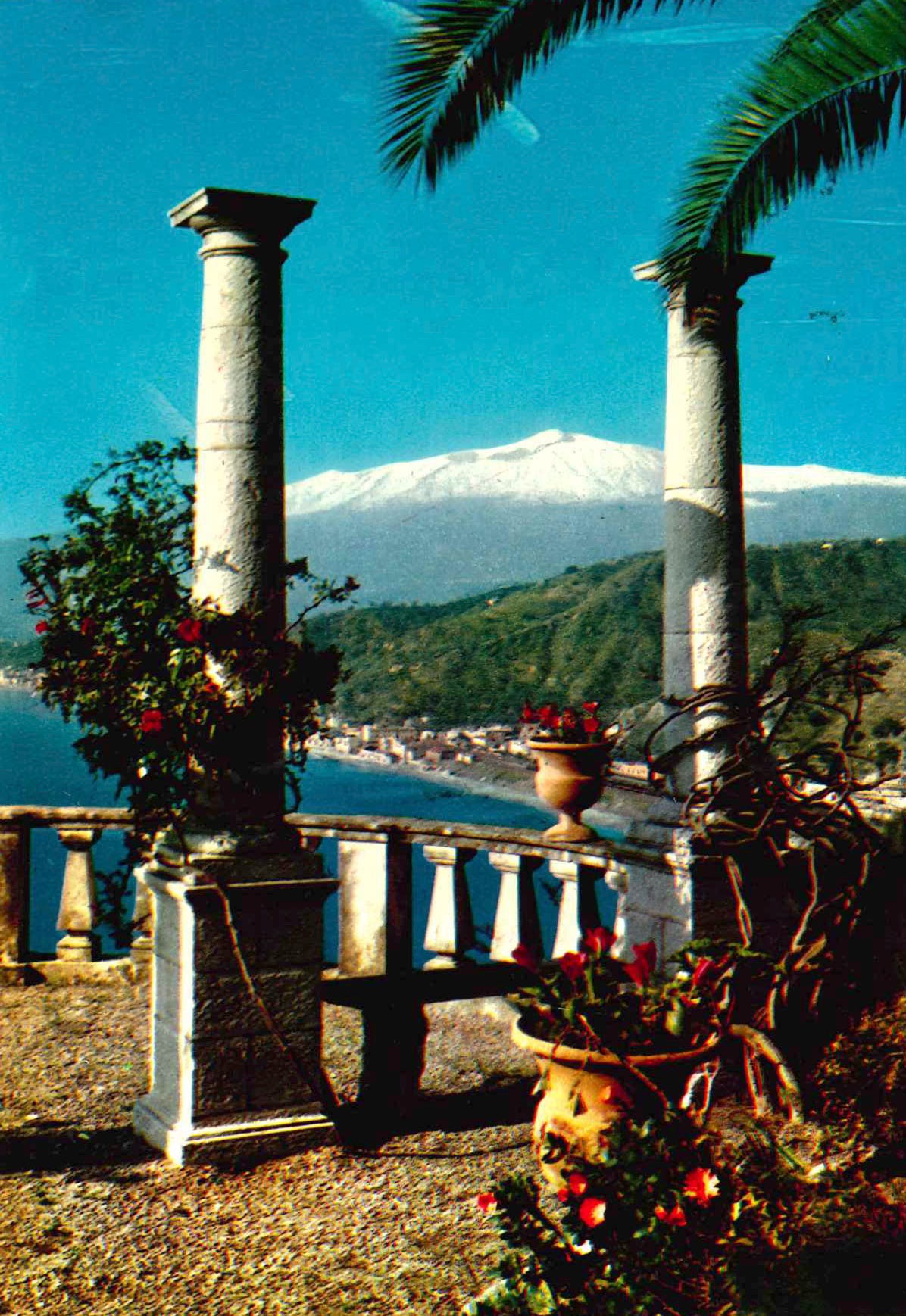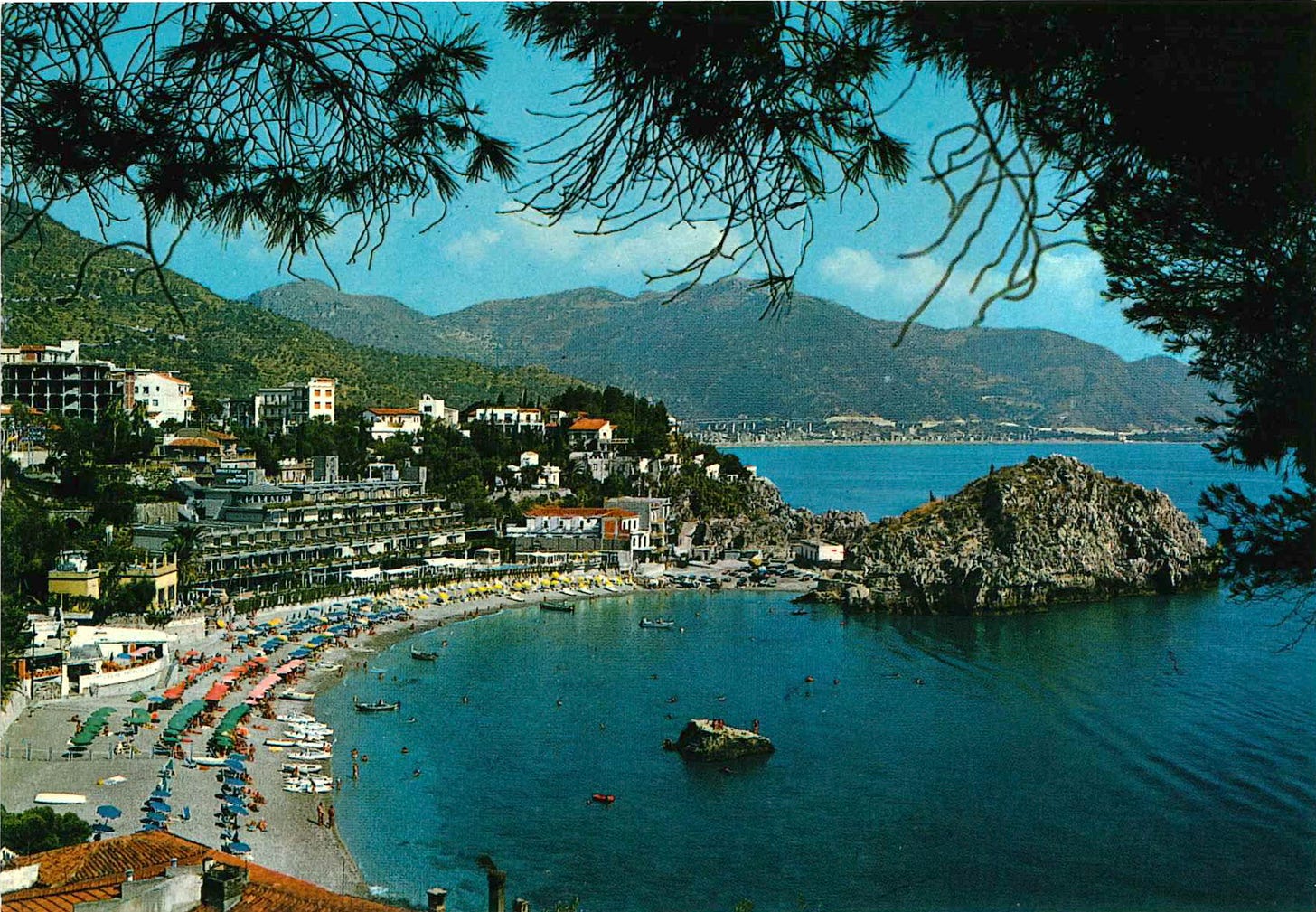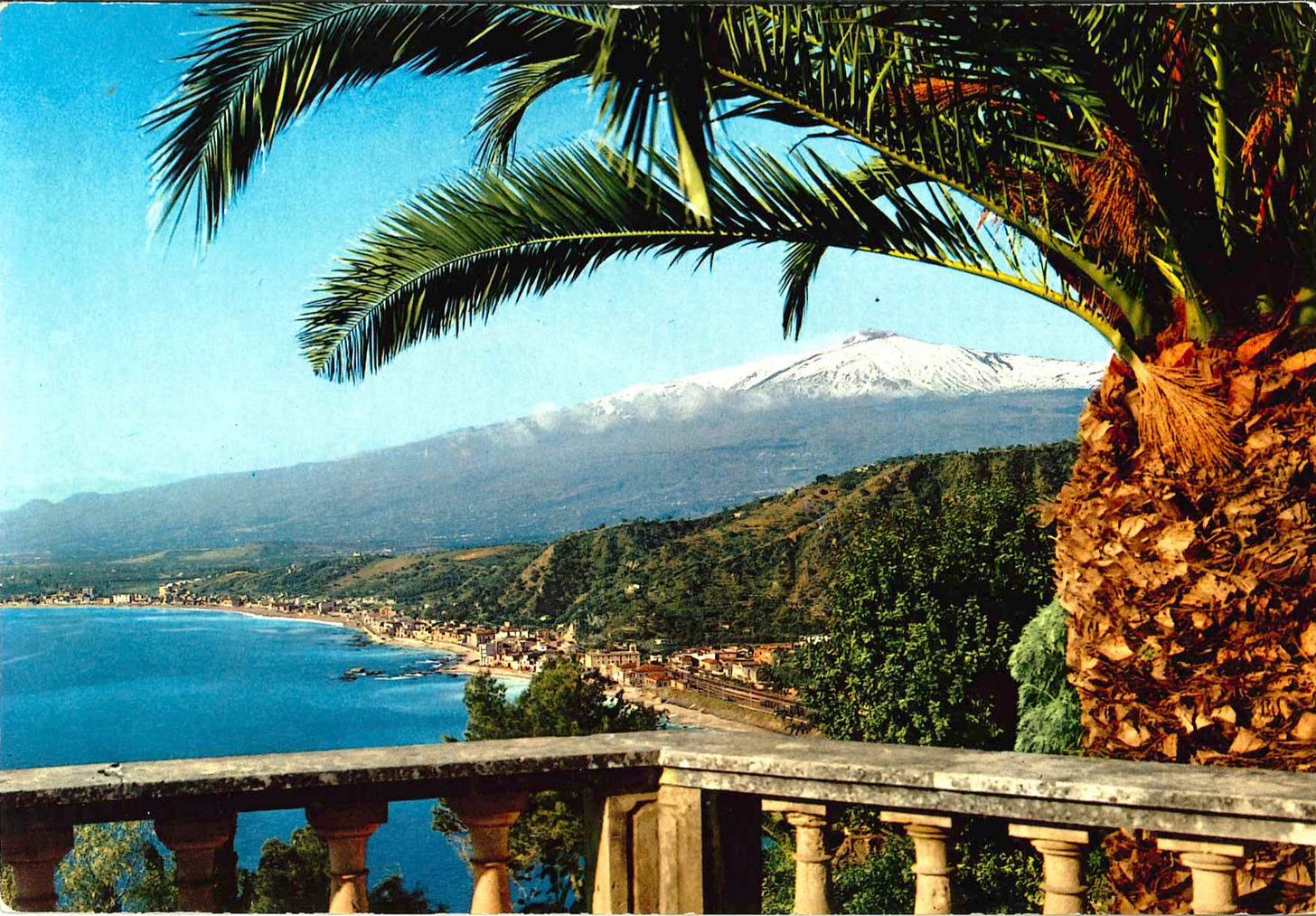Fight the Winter Blues, Trek to Sicily
Ever been to Taormina? It's an ancient gem overlooked by an active volcano named Etna, and it's a kind of Sehnsuchtsorte for many people originating north of the Alps
It’s winter in Scandinavia, which means it’s cold, windy, and many hours of darkness. So, since you seem to like the more spring-like sentiments evoked by our trip to Madeira (see here and here), I’d like to introduce you to one of my personal Sehnsuchtsorte, or places of longing, namely: Sicily, specifically, Taormina.
Doing so means taking a trip down memory lane in a very personal way: it’s been among the places I visited with the woman I ended up marrying on our very first joint trip abroad many years ago. (For the record, we flew to Catania—another extremely special place in Sicily on the foothills of Mt. Etna—and did a small road trip around the eastern parts of the island, including to Syracuse: it was awesome; I also checked the ESPC, but, sadly, I don’t have more than four non-too-nice postcards, hence I direct you to Catania’s Wikipedia page.)
So, let me take you by the hand and guide you through the streets and surroundings of Taormina. According to that place’s Wikipedia page, this much you need to know:
The history of Taormina dates back to before Ancient Greece established its first colony on Sicily in 734 BCE in Magna Graecia. After the fall of the Western Roman Empire, Taormina continued to rank as one of the more important towns of the island. Taormina followed the history of Sicily in being ruled by successive foreign monarchs. After the Italian unification, Taormina began to attract well-off tourists from northern Europe…
Taormina in Grey, Black, and White (sort of)
Let’s start with a few pre-WW1 postcards showing the campagna in the Italian Mezzogiorno in all its seemingly archaic grandeur, interspersed with a few lines from Wikipedia to contextualise what you’re seeing:
The present town of Taormina occupies the ancient site, on a hill that forms the last projecting point of the mountain ridge that extends along the coast from Cape Pelorus to this point. The site of the old town is about 250 metres (820 ft) above the sea, while a very steep and almost isolated rock, crowned by a Norman castle, rises about 150 metres (490 ft) higher. This is the likely site of the ancient Arx or citadel, an inaccessible position mentioned by ancient writers. Portions of the ancient walls may be traced at intervals all round the brow of the hill, the whole of the summit of which was occupied by the ancient city. Numerous fragments of ancient buildings are scattered over its whole surface, including extensive reservoirs of water, sepulchres, tessellated pavements, etc., and the remains of a spacious edifice, commonly called a Naumachia, but the real purpose of which it is difficult to determine.
About the “panorama of the city as seen from the Greek theatre”, shown in the first postcard, I shall further note a few more lines about said theatre:
The ancient theatre of Taormina is built for the most part of brick, and is therefore probably of Roman date, though the plan and arrangement are in accordance with those of Greek, rather than Roman, theatres; whence it is supposed that the present structure was rebuilt upon the foundations of an older theatre of the Greek period. With a diameter of 109 metres (358 ft) (after an expansion in the 2nd century), this theatre is the second largest of its kind in Sicily (after that of Syracuse); it is frequently used for operatic and theatrical performances and for concerts. The greater part of the original seats have disappeared, but the wall which surrounded the whole cavea is preserved, and the proscenium with the back wall of the scena and its appendages, of which only traces remain in most ancient theatres, are here preserved in an uncommon state of integrity. From the fragments of architectural decorations still extant it has been determined that these were of the Corinthian order, and richly ornamented…[to be continued below]
On a postcard dating from after WW2, the Greco-Roman theatre of Taormina can be seen in all its awesome glory (I can also attest to its magnificence, because we also visited it back in autumn 2009—I even talked the ticket officer into letting us in for free as the Italian gov’t back then permitted access to such sites to students of history [I was a Ph.D. candidate back then]).
That said and showed, let’s return to the above-cited paragraph from Wikipedia:
Some portions of a temple are also visible, converted into the church of San Pancrazio, but the edifice is of small size.
Speaking of San Pancrazio, I also have a very nice postcard showing that site:
Taormina in Full, Bright Colours
Of course, I have a few postcards of more recent vintage, which is to say: in bright colours!
We’ll start with the awe-inspiring view of Mt. Etna—and, if you’re ever in the area and get the chance, do drive up to the parking lot at about 2,000m above sea level; there you can take, first, a gondola and, later, a jeep to get to its peak: the sights (and smells) of such a volcano are both nauseating and breath-taking at the same time (no pun intended):
Fancy a swim in the Mediterranean? It’s possible in Taormina, too!
The area is also famous for the ubiquity of large cactuses, as seen in the below postcard:
Finally for now, enjoy the grandeur of this composition:
(Yes, that’s snow on Mt. Etna, and in winter, you can go skiing there.)











The cactus growing between the rocks of the hillside makes me wonder if it was all there naturally, or if one of the conquering peoples brought it with them. So strange to see both the trees and the cactus. Like the high desert in this country.
The theater is amazing